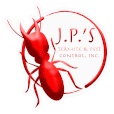|
Letting a termite infestation go unabated in your home can cause significant damage, and eventually, you will have to pay for that. Termites are an insidious past because they can easily go unnoticed if you are unfamiliar with the signs of their presence. Unfortunately, to make things worse, most homeowners' insurance policies do not offer any coverage for termite damage. All of that should add up to a pretty clear equation. You need to inspect and properly respond to infestations of any kind regularly. What To Look For When Inspecting For Termite Damage Many types of termites can choose to invade a person's home. The wide diversity of behavioral phenotypes found in the abundant termite species only adds to the task's difficulty. Your first responsibility will be to determine the species of the invader that you are tackling. Common Types Of Home Invaders And Pests Many people make the poor decision of disregarding flying insects around their homes as being flying ants. While visually, they may look fairly similar to an ant if there are many flying, they could be a weaned termite that loves to swarm throughout the southeastern United States during the spring months. Subterranean Termites Subterranean termites can be encountered in all territories of the United States except for Alaska. These termites live underground for most of their lives and typically flocked to moist areas to form colonies. Sometimes will build distinctive structures called mud tubes that are used for storage and as shelter. These are the most invasive and destructive species of termites in the United States. They have incredibly strong mandibles that can shoot through even the hardest of woods and lead to the complete collapse of a structure if left unabated for too long. Formosan Termites These termites are closely related to the subterranean termites' Ponce is a were imported originally from China and are the most aggressive of all termite species worldwide. You can find these throughout the United States are territories in the southeastern Pacific, including Kawai and California and many of the southeastern states. They can choose through 1 foot of 2 x 4 wood in under a month and build colonies with nearly half a million termites on average. If you suspect that you have these termites in your home, you must attend to them immediately as they can cause significant damage to a structure in under a year. The worst infestations of this species of termite have been known to have truth through electrical wires, which led to power outages. Damp Wood Termites This species of termite prefers to live along the temperate forests found on the Pacific coast, and portions of the more air it states and the Southwest. They can grow as large as 5/8 of a but only infect a saturated wood with moisture. Typically you will find these living inside of dead trees and logs, but if they are rare to find inside of an inhabited structure because most structures use wood that is to dry for this species to survive. Dry Wood Termites This is another dangerous invasive species of termites that can cause significant structural damage that you need to keep an eye out. The biggest differentiator between these guys and the Formosan or subterranean termites is that the dry wood termites do not need to touch the ground. They are larger than some of the other species, growing as large as one full inch long. This is a species of termite that can be found inside wood furniture or framing that is sold as construction materials. They can be found in many inhabited structures, so make sure to monitor if any of your dry wood structures have been affected by an infestation of dry wood termites regularly. Conehead Termites Conehead termites can easily be mistaken for an answer because they travel more similarly to ants than they do most other use of termites. Crawling across the ground, they can travel much more quickly than other species of termites. They use this speed to create a network of underground tunnels that will occasionally connect to a home. When this occurs, the termites can or maybe colony inside the walls of a structure and end up chewing through anything wooden that they encounter on the way, including walls and floors. As can be pretty gnarly because they are more difficult to detect than some of the other termite species, they can easily be mistaken for ants if you are not closely inspecting any suspicious bugs near your property. Looking for help with routine Pest Control? Are you looking for a pest control company in Lakeland or Polk County? We've been servicing the community since 1999. Whether you're in need of routine pest control or a one-time solution, give us a call at 863-581-2104 or submit our pricing request form and someone on our team will contact you! |
Jason ParkerIn 1999, I decided to start my own pest control business so I could have more flexibility in order to be involved in my sons' sporting activities (and to be able to fish when I wanted to). Twenty years later, I'm proud to have my sons working with me helping grow the company! Archives
January 2021
Categories |
|
WHY CHOOSE US
OUR SERVICESREQUEST FREE INSPECTIONSUBMIT A TESTIMONIAL |
LEARN MORE
PEST LIBRARYREAD OUR BLOG |
|


 RSS Feed
RSS Feed

